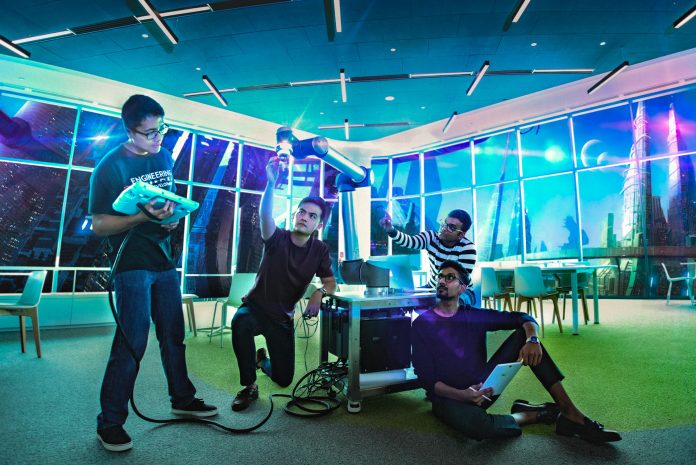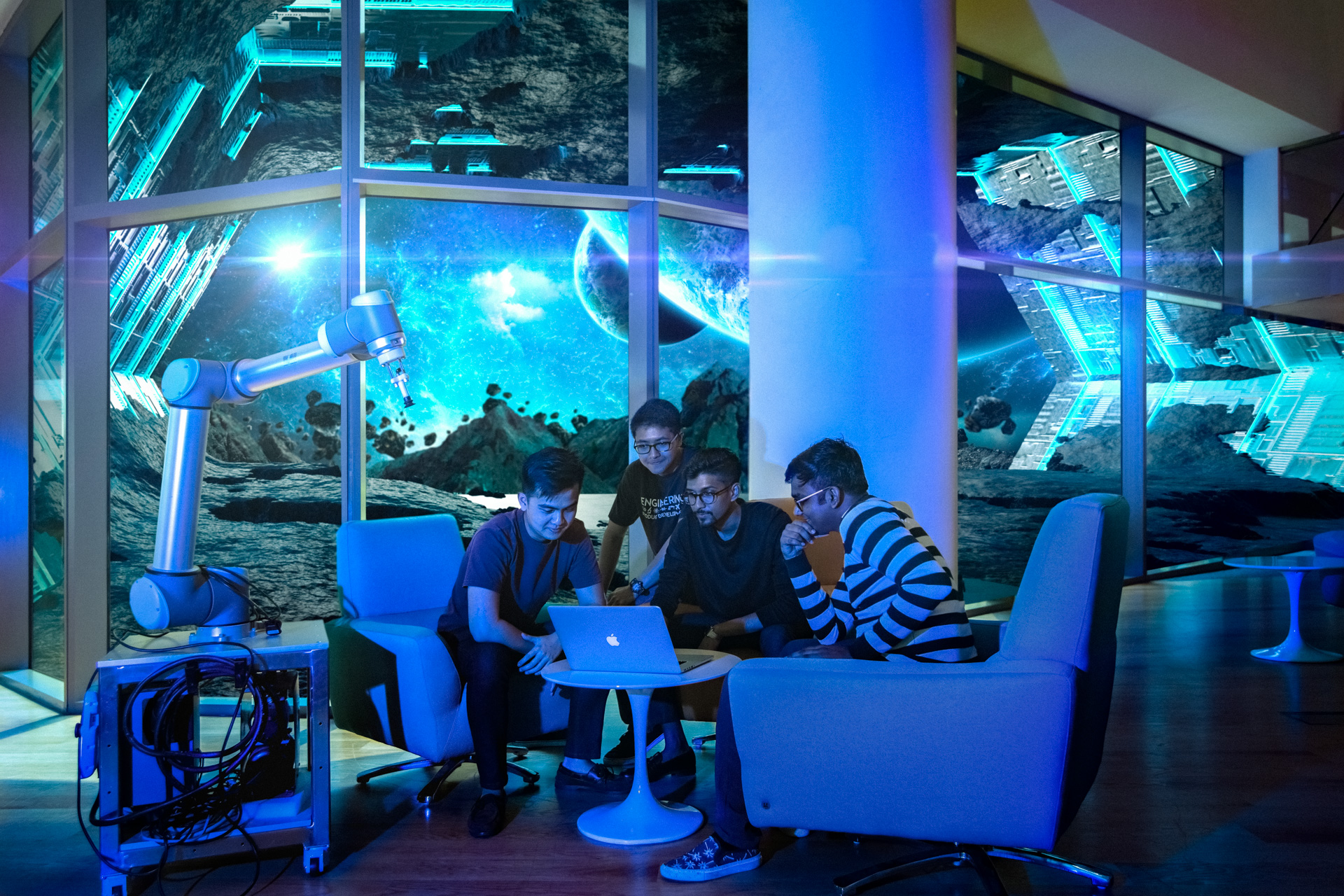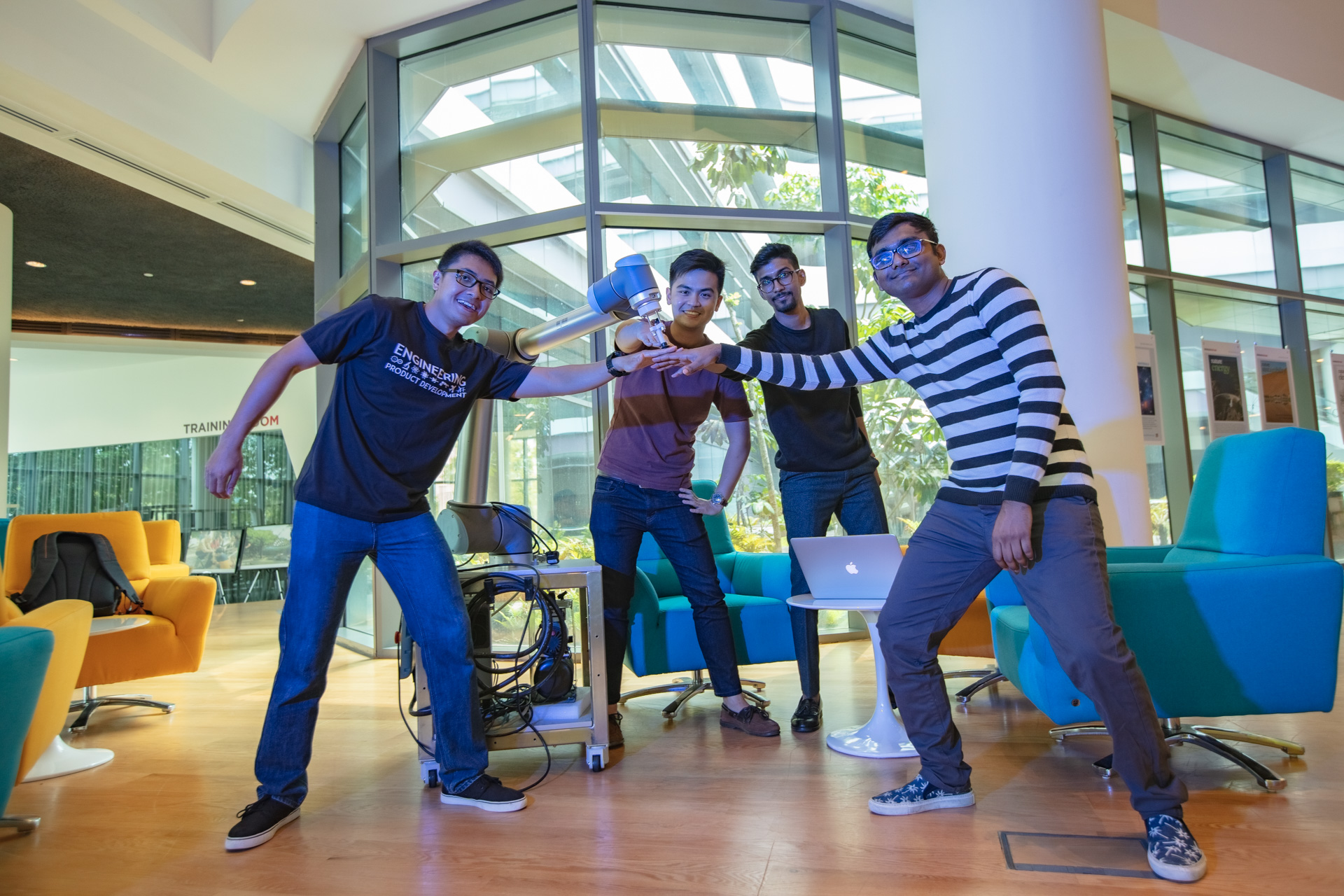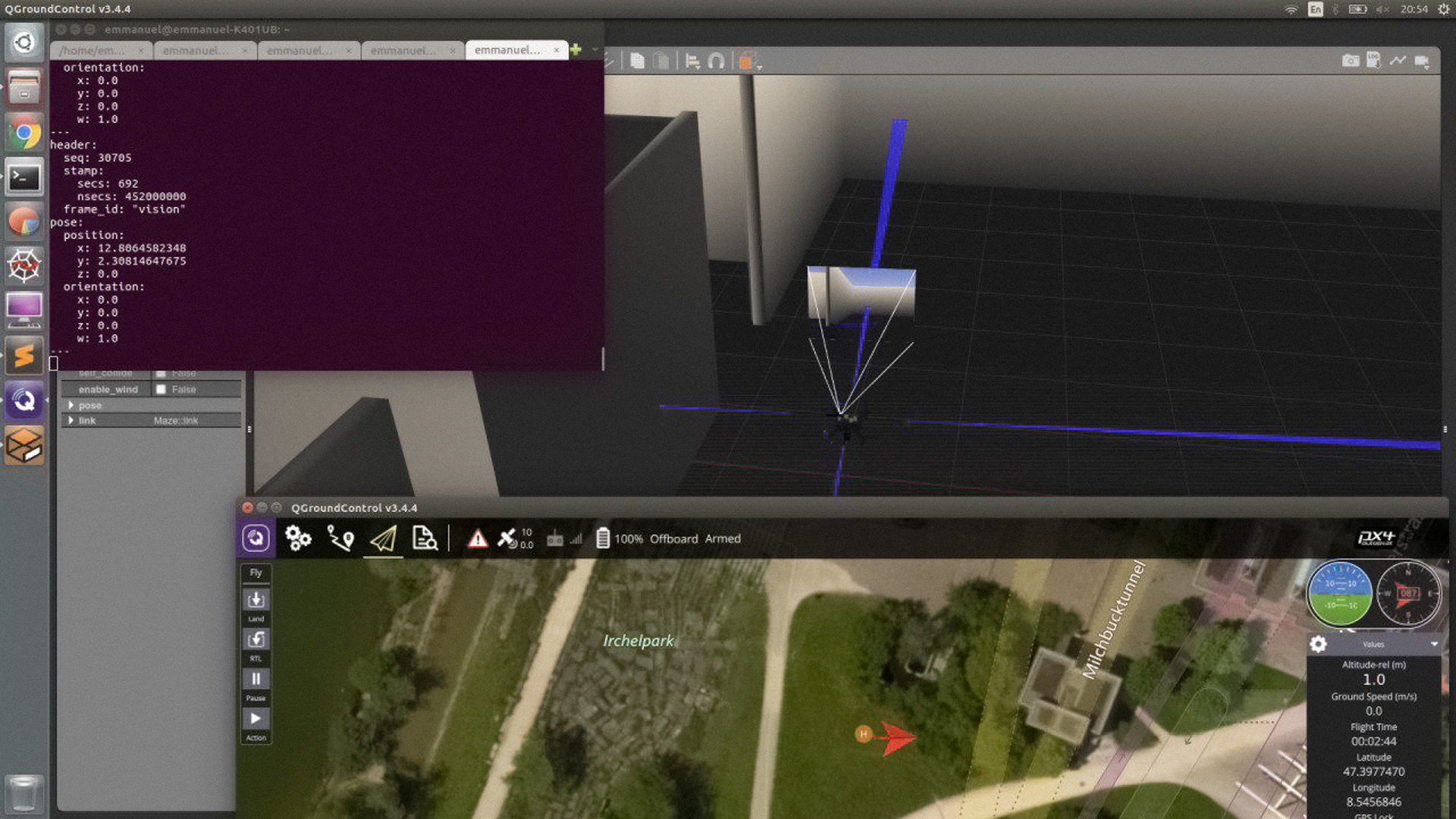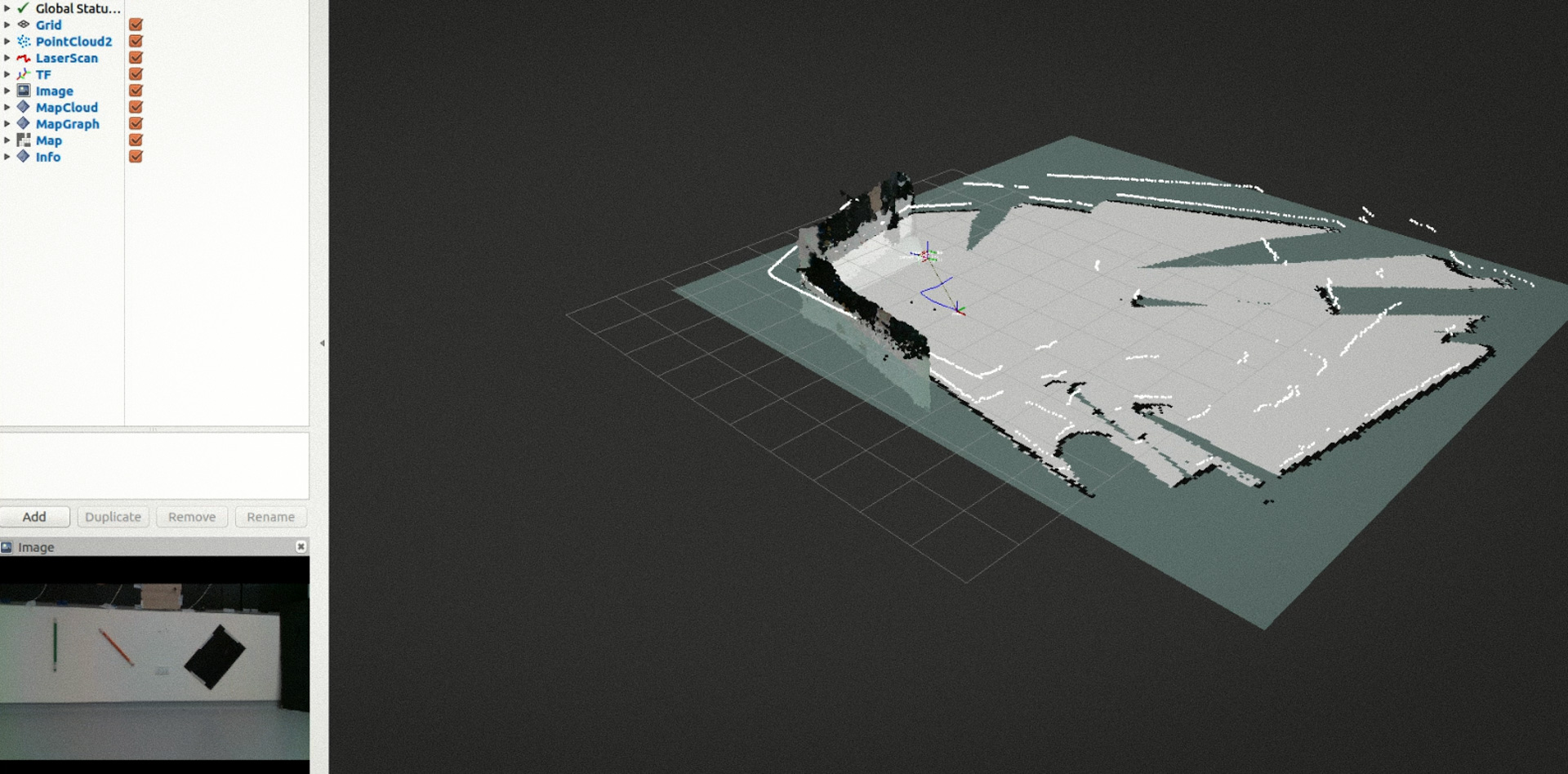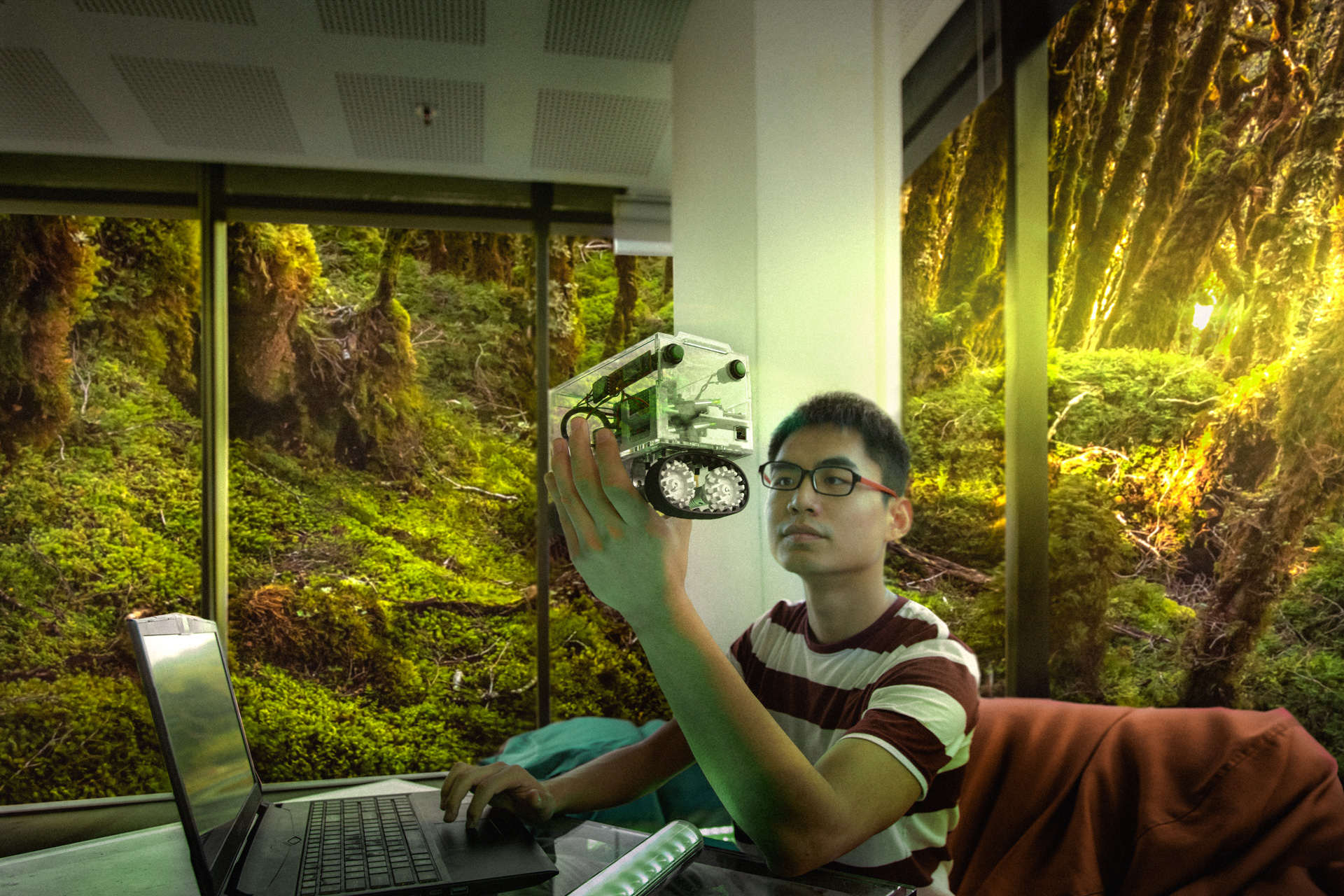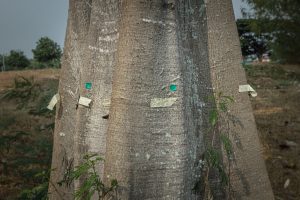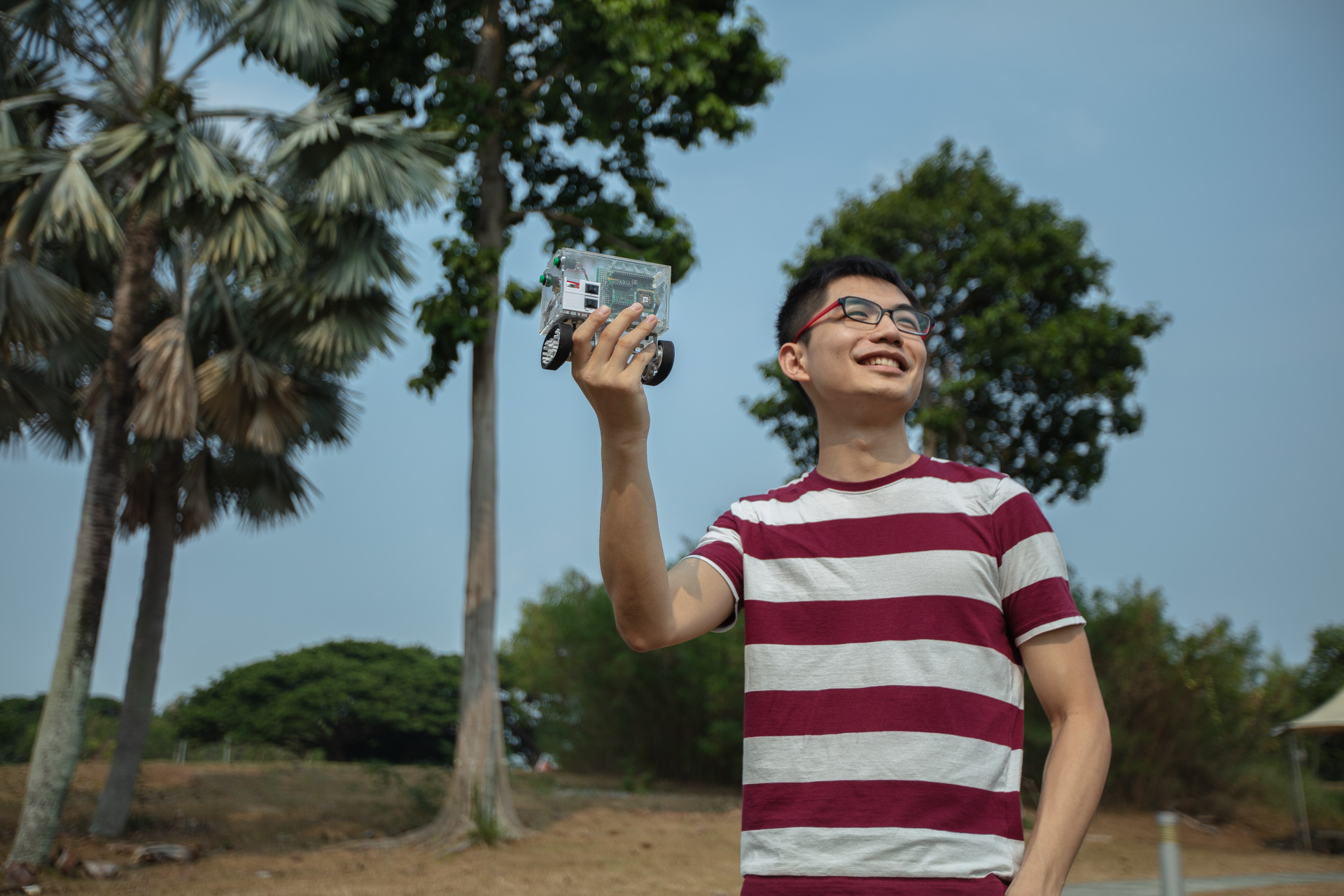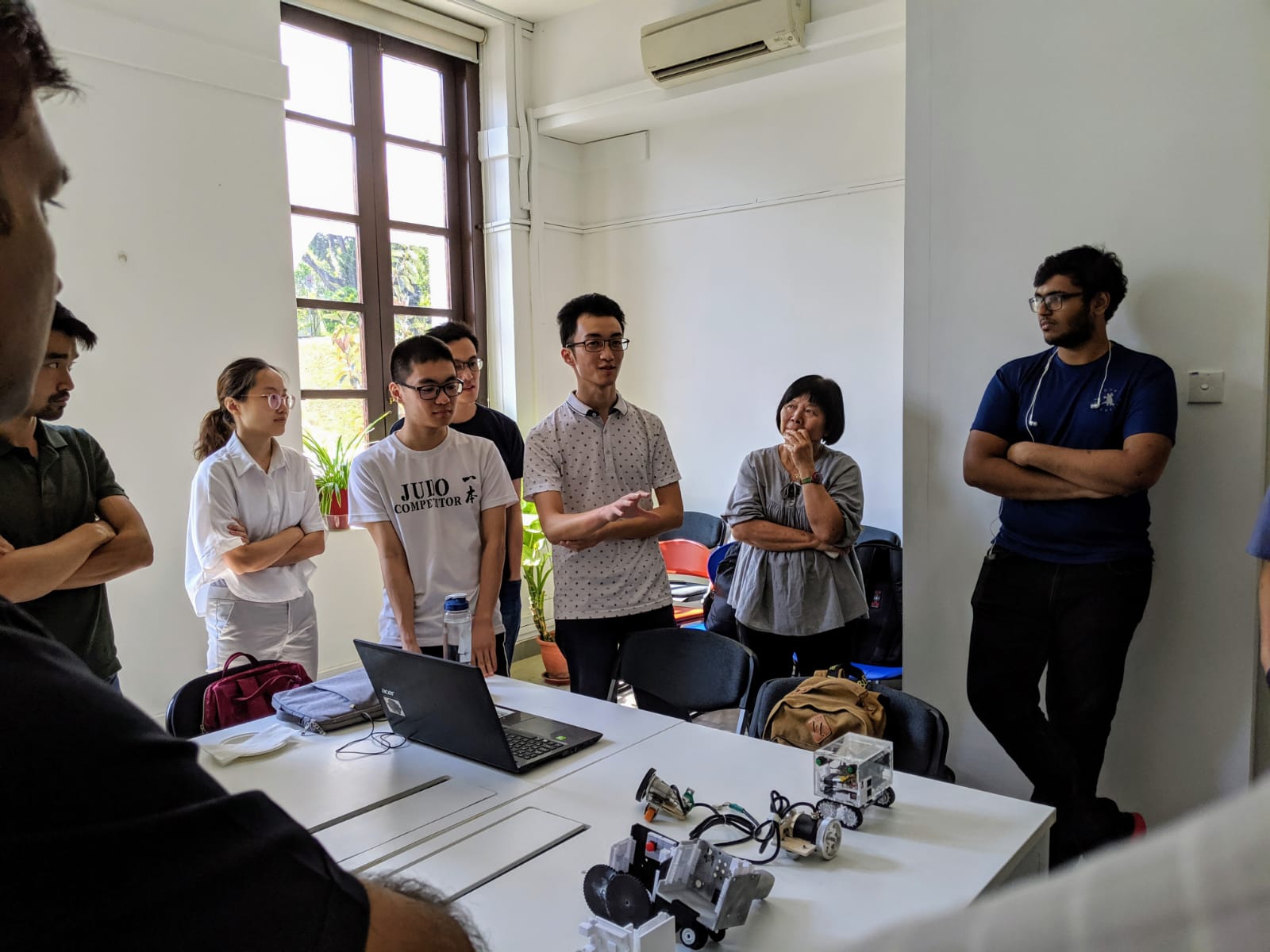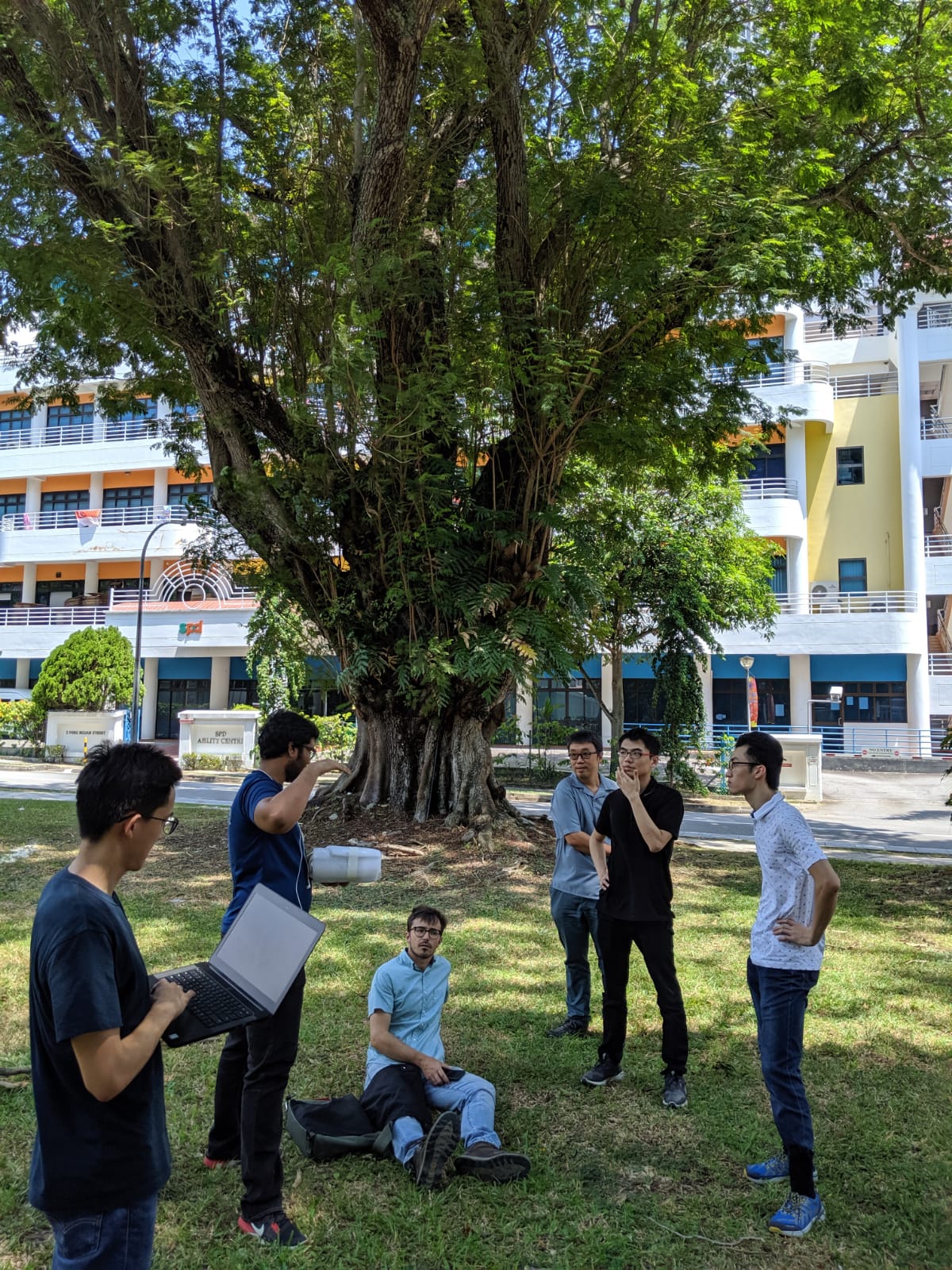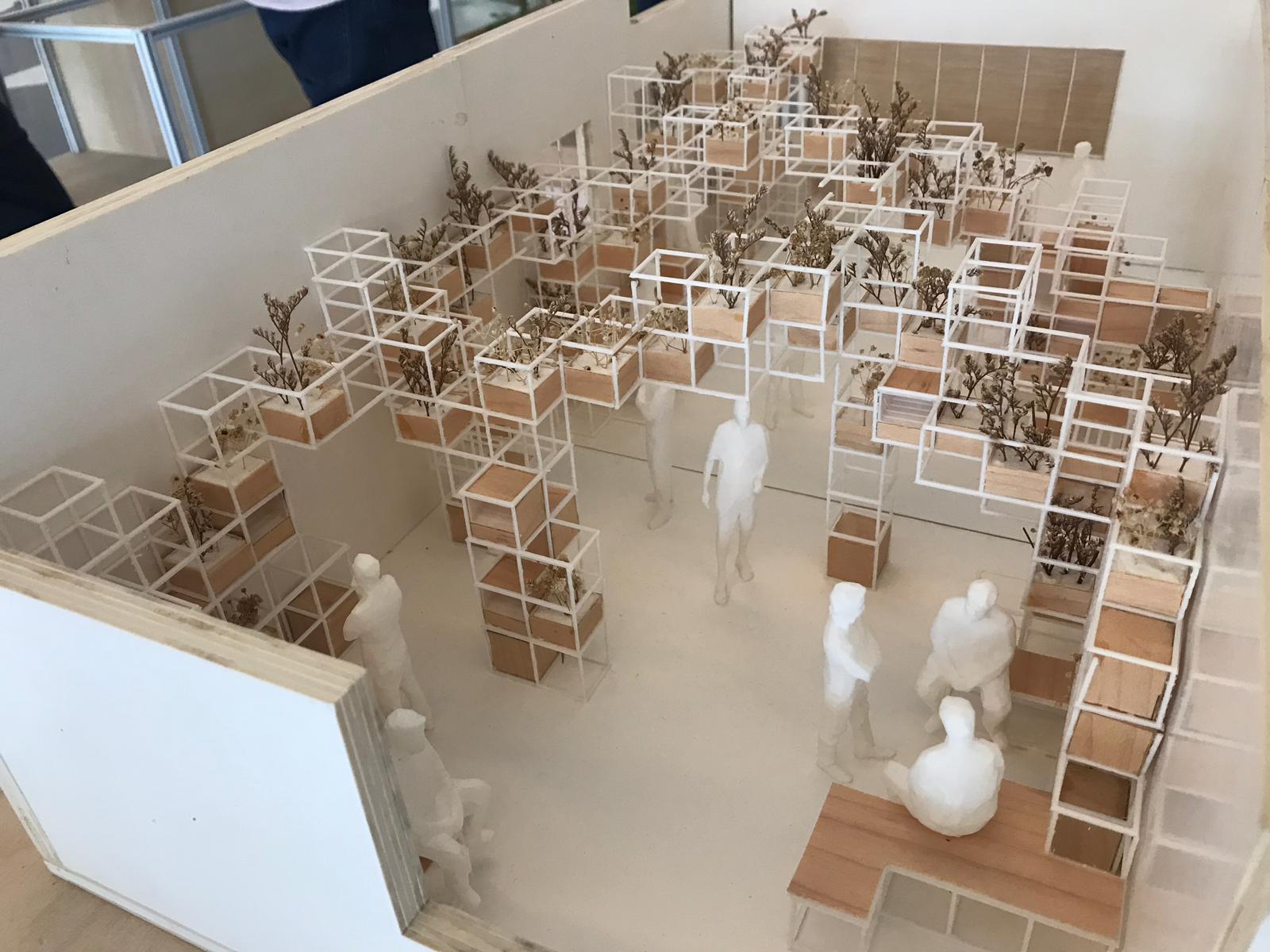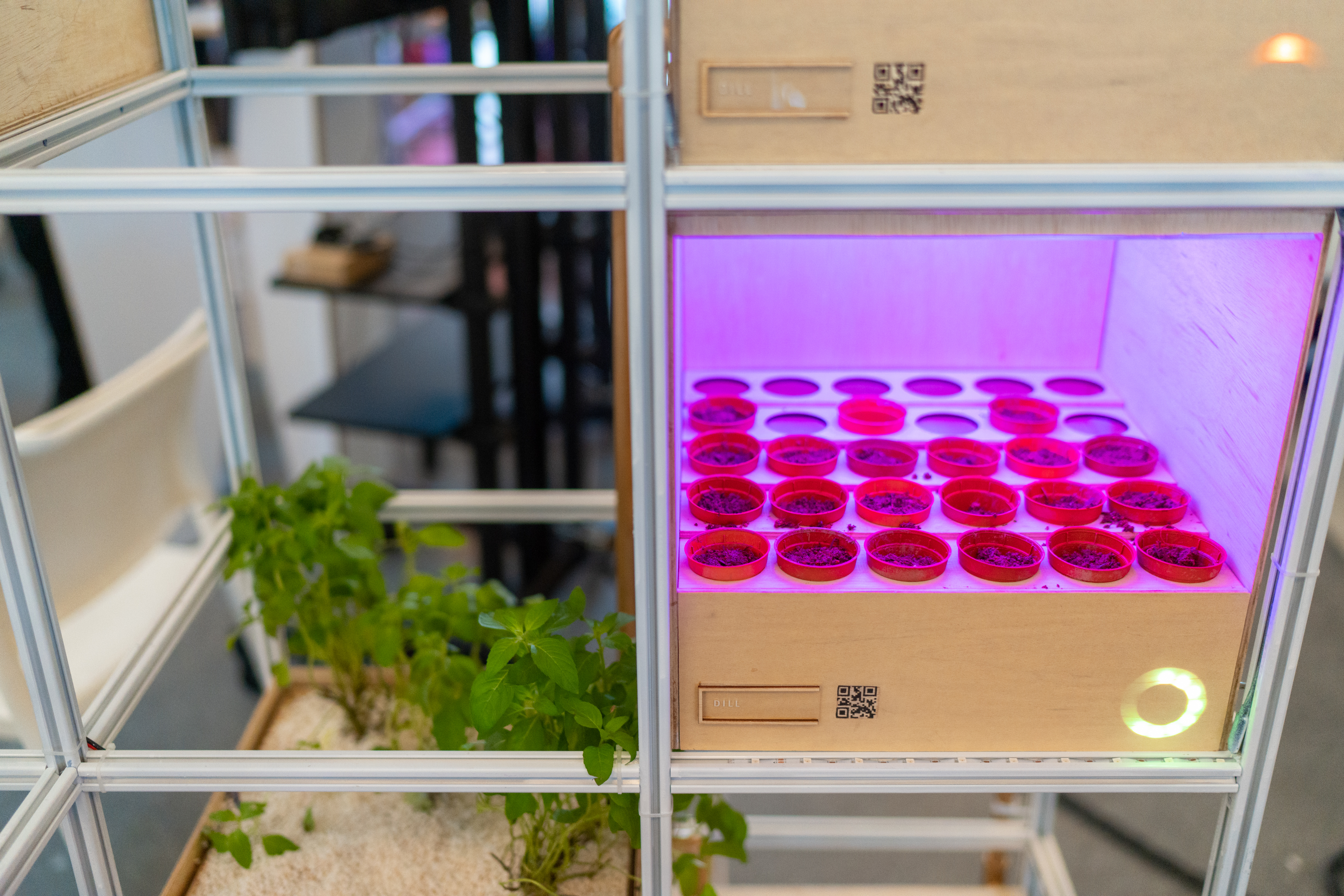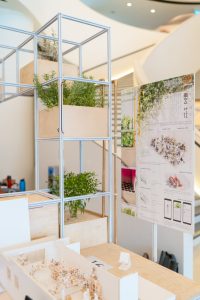Virtual worlds created by AI for AI training, autonomous drones for industrial inspections, a smarter way to monitor tree health, and a modular rooftop garden. These are some of the many exciting Capstone projects from the graduating class of 2019. We speak to four groups on how they turned their visions into reality.
Project: Bifrost – Simulating Reality for Accelerated AI Development
Team members: Aravind Kandiah (ISTD), Charles Wong (ISTD), Reuben Wang Rong Wen (EPD), Judith Lim (EPD), Keshigeyan Chandrasegaran (ISTD), Canneth Ho (EPD)
Tell us about your project!
Aravind (A): Maybe a little context is in order. Data has become one of the most expensive and valuable commodities in recent times. It powers today’s complex artificial intelligence (AI) systems, but procuring and labelling data is extremely expensive and time-consuming.
Currently, AI companies have to take a large number of photographs of different scenarios, and send them to labelling shops where workers manually highlight and label objects/people in the images. The labelled data is then fed into AI programmes to train them to recognize their surroundings. We believe there has to be a better way of doing this.
To this end, we created a virtual world that simulates our reality. In this world, we could programmatically take as many pictures as we want of infinitely varied scenarios and objects, and label them easily without human labour. In order to build this virtual world at the scale we want, we used AI to help create and replicate the real world. In short, it is a world engine built by AI, to train other AI agents.
Who is your industry partner?
A: We are an entrepreneurship startup, so we didn’t have an industry partner. Instead, we have revenue-generating clients from different industries, such as logistics and transport. We worked closely with them to help fine-tune our product offering and feature set.
How did you decide on this project?
A: I worked as an AI engineer over the summer of 2018 and had the pleasure of being surrounded by deep tech startups. They all face a common problem: they require high-quality, labelled data. Currently, this data is produced manually, so labour becomes a bottleneck. We spoke to over 50 industry professionals in the AI sector to better understand the problem. We then broke the problem down and re-envisioned the way data and AI are built. That eventually evolved into our final concept.
The Capstone project requires teams to have members from different pillars. How do you think this made your team better?
A: Students from each pillar approach the same problem differently since they are equipped with different skillsets and knowledge. The different methodologies that our team members brought in allowed us take on problems that could not be solved by the expertise from a single pillar. One example is harmonising the use of computer vision algorithms, and robotic optimisation and control algorithms to program robotic AI agents to grab different objects (e.g. a soft fruit and a full water bottle).
How has SUTD empowered you to work on such a project?
A: The two most valuable things that SUTD has imparted to us are design thinking, and the concept of learning to learn. The first is the methodology of approaching a problem free of preconceived bias, and to systematically understand it and explore the solution space to solve the problem for the target user. The second — learning to learn — is especially relevant in fast-moving fields such as computer science and AI, where there are so many new algorithms and breakthroughs every week. Not everything can be taught and learned in school, but SUTD has given us a solid foundation to pick up and ingest new knowledge on our own.
What’s next for this project?
A: Now that we’ve graduated, I am working full time on this project. Our startup is called Bifrost. I want to find the right markets for our product, and develop our revenue streams so that we can channel the funds into building our vision.
Project: SHADOW – Surveying Hover Agent Deployed with Onboard Wayfinder
Team members: Emmanuel Tang Zheng Wei (EPD), Byron Elton Tan Yi-An (EPD), Hoe Jin Han Leonard (EPD), Gan Cheng Yi Justin (EPD), Naik Hiong Chiang (ISTD), Trinh Vu Linh Chi (ISTD)
Tell us about your project!
Emmanuel (E): SHADOW is an autonomous unmanned aerial vehicle (UAV) developed for a very specific task. It’s designed to conduct visual inspections for metal defects in industrial storage tanks without using GPS. Tanks that store highly corrosive materials need to undergo regular inspections to prevent leakages and accidents. However, the current inspection process is tedious, risky and costly. Tanks can go up to 20 metres tall, so scaffolding is needed for inspection. This contributes to cost and safety concerns. SHADOW helps to streamline the tank inspection process by replacing the human element in the first phase of the routine: the visual inspection for metal defects.
Who is your industry partner?
E: Performance Rotors. It’s a Singapore drone solutions company that specialises in confined space inspections. Their clients include companies in the maritime, oil and gas, and agriculture industries.
How did you decide on this project?
E: We wanted to do a project that was challenging and had industrial applications. Most of us leaned towards doing something related to robotics, automation and AI, and we wanted a project that had a synergy between these areas.
For me, it was a natural choice to work on a drone-related project. I’ve been working with drones throughout my time in SUTD – I was a member of the Multi-Rotor Society where I took part in local and overseas competitions. I did an Undergraduate Research Opportunities Programme (UROP) related to drone technology, as well as an internship where I worked on a UAV project.
I know a senior who works in Performance Rotors, so we approached them to pitch our idea of an autonomous drone. After hearing our presentation, the company felt that it was a good project to fund.
The Capstone Project requires teams to have members from different pillars. How do you think this has made your team better?
E: I think going through a common programme in the Freshmore year made it easy for us to work together, even though we specialise in different areas — my fellow EPD team mates are experienced in robotics, while the ISTD members are accomplished in computer vision and machine learning. We have a tight-knit community in SUTD so we sort of know everyone from the different pillars.
How has SUTD empowered you to work on such a project?
E: The SUTD curriculum trained us to juggle multiple projects at the same time. While we were working on our Capstone project, we also had other courses to attend. It’s probably going to be the same when we go into the working world!
We’re also trained to break problems down into smaller parts, and overcome them in stages instead of tackling it as one big problem. This helped us to take on complex problems more effectively.
What’s next for this project?
E: Performance Rotors may plan to develop the UAV further for their storage tank inspection services. But they will need to run the product through more testing and certifications before rolling them out.
Project Name: Non-destructive Geometric Measurement of Tree Parts
Team members: Wang Gan (EPD), Wang Weimeng (EPD), Akash Omble (ESD), Dominic Lim (EPD), Liu Menglu (ESD), Qi Yanjun (ESD), Law Jiali (ISTD)
Tell us about your project!
Wang Gan (W): We created a device called the Tree Surface Profiler, which allows you to measure the precise geometry of the cross-sections of tree parts. It runs on caterpillar tracks, and as you trace the device around the tree, its sensors take the required measurements. The readings are transmitted via Bluetooth to an application on the computer, which then generates the cross-sectional geometry of the tree part in 3D on site.
Who is your industry partner?
W: Our partner was The National Parks Board, or NParks. It manages about two million trees along Singapore’s roadsides, parks and state land. As trees grow older, they became structurally weaker. They may also bend and fracture because of wind and rain. NParks monitors the health of these trees to reduce the risk of them falling. Currently, NParks uses sonic tomography to generate maps showing the decay conditions of trees, and this technique requires them to know the precise geometry of the tree being measured.
To do this, they use vernier calipers to make measurements at approximately 20 points around the tree, and calculate the shape using triangulation. This process takes 45 minutes for one tree, with an accuracy of around 10cm. Our Tree Surface Profiler takes about five to seven minutes with a higher accuracy of 1–2cm. Our technique typically generates 3,000 points to define the tree’s cross-sectional geometry, and we can increase or reduce the number of points if necessary.
How did you decide on this project?
W: I think it’s an interesting challenge because it’s a very specific engineering problem. During the brainstorming phase, my team came up with 50 ideas from very different perspectives. We then rated these ideas and shortlisted two to present to our client. Our first idea uses light sensors, while the second idea uses path generation, which evolved into the Tree Surface Profiler. The final version we presented was our sixth prototype!
The Capstone Project requires teams to have members from different pillars. How do you think this has made your team better?
W: We had members from EPD, ESD and ISTD. We didn’t know one another before this. I think having team mates from different backgrounds means we have a wider range of ideas to work with. That is how we came up with so many ideas at the start. I think we learnt a lot from one another during the course of doing this project.
How has SUTD enabled you to do this project?
W: It’s great that we have access to rapid prototyping tools in the Fabrication Lab. Without the lab’s tools, it would be much slower to create the prototype, and we wouldn’t have managed to create as many iterations as we did. The multiple iterations helped us to improve the Profiler based on the feedback we received. Our faculty members are also very approachable. Even if they are busy, they would make time to advise us on the project, or direct you to another professor with the relevant expertise.
What’s next for this project?
W: I understand that NParks is keen to further develop the Profiler, because they are happy with the time savings and accuracy of the measurements. I’ve proposed to NParks to partner with SUTD to refine our final prototype into a real product for wide-scale usage.
Project: Kumo – modular urban farming system on office rooftops
Team members: Ang Sheng Ping (ISTD), Benjamin Goh (EPD), Darius New (EPD), Dhriti Wasan (ISTD), Ryan Teo (ASD), Tan Gee Yang (ASD)
Tell us about your project!
Kumo is a modular farming system that’s designed to fit on any office rooftops in Singapore. But more than just creating an urban farm, we also want it to be a social interaction space for office workers.
To meet both objectives, we gamified the process of growing and harvesting herbs to encourage people to take care of the farm, and in the process create opportunities for social interactions. Gamifying the farming process helps us to maximize the herb yield, and also encourages the uninitiated to participate.
When we were conceptualising Kumo, we were inspired by the design aesthetics of Sou Fujimoto. He’s a Japanese architect known for his delicate light structures and permeable enclosures – the “you can see through the structure, yet still see the structure” design.
We chose leafy herbs to help shade the farm against the sun, while the grid-like frames that house the planter boxes allow breeze to flow freely through the area.
Who is your industry partner?
Our industry partner is Hope Technik. It is a Singapore-based engineering company with clients that span across industries such as aerospace, and transport and logistics systems.
How did you decide on this project?
This was a self-initiated project, and we actually started off with an idea of a robot waiter! We made quite a few changes to the project, however, and eventually decided on urban farming on office rooftops.
We had two objectives for our capstone project. The first was to create a physical space for social interaction between office workers. Hope Technik was very kind in lending us their office rooftop, so we modeled our project with their rooftop space in mind. With that said, we designed Kumo to be modular, so it can be customised and installed on all office rooftops in Singapore.
The second objective was to make use of underutilised spaces and technology to farm sustainably and efficiently. This is in line with Singapore’s “30 by 30” goal which aims to have Singapore becoming 30% self-sufficient in food production by the year 2030.
The Capstone Project requires teams to have members from different pillars. How do you think this has made your team better?
To create Kumo, we needed to harness the expertise of students from different pillars.
For starters, the main structure was designed by our ASD team members, who got their inspiration from Sou Fujimoto and applied it on Kumo.
The 40cm x 40cm planter boxes that would house the herbs and fit into the structure were more complicated to design, and it took our ASD and EPD team members five to six iterations to perfect the design. Despite their minimalist appearance, the planter boxes are fitted with electronics to ensure that the plants receive the right amount of water and light needed for maximum yield.
Lastly, the ISTD team members devised the app to help users monitor the plants and gamify the farming process. They also designed the LED lights and indicators on the boxes to guide users on how to interact with them e.g. a red light on the germination planter box means the plant needs to be watered, while a full circle of light on the hydroponics planter box means the herb is ready to be harvested.
How has SUTD enabled you to do this project?
Kumo is a project that demands a diverse set of knowledge and skills to produce. This cross-collaboration between students from different pillars is a requirement for many of our past modules. When we embarked on this project, we naturally drew on each other’s expertise, and this enabled Kumo to develop many dimensions beyond just a regular rooftop farm.
SUTD also equipped us with the design-thinking skills and fabrication tools required to conceptualise and produce prototypes. The school’s facilities allowed us to turn Kumo from plan to product quickly and to make improvements.
Like what you just read?
Missed our Open House talks? Rewatch the sessions here.
#whySUTD? We’re glad you asked – here’s why!
It can be hard to ask the right questions that will help you to decide which university to join, so we’ve compiled a list of FAQs for you here.




















